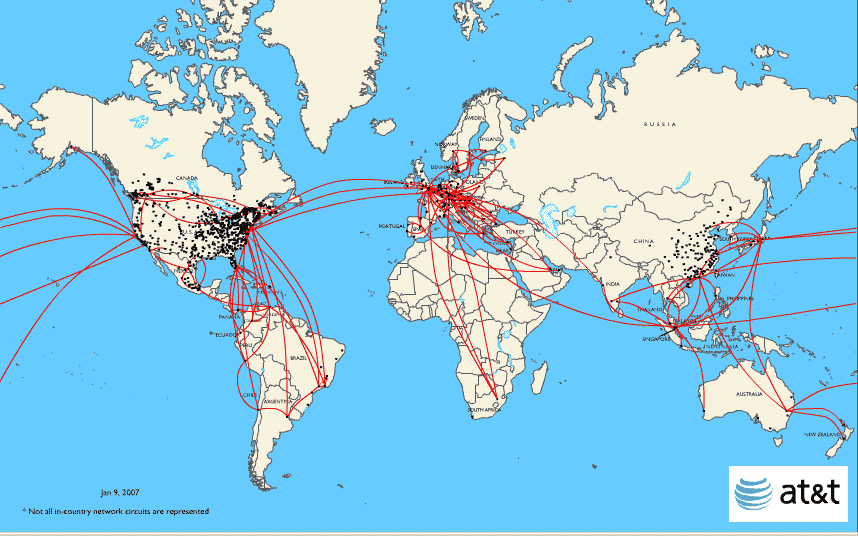Have you ever been awe struck by the hidden intricacies of the Internet? Have you ever wondered how it works? C’mon, say yes, just for me. In this article I will explain, in as few words as possible, the basics of the Internet and give an example of how your computer communicates with Yahoo to display a web page.
The Internet is a collection of interconnected corporate, government, and educational networks. The networks which form the core of the Internet, and connect all the smaller networks, are the Internet Service Providers (ISP) such as Shaw, Telus, AT&T, Comcast, and AOL. These ISPs have routers, typically manufactured by Cisco, scattered throughout the world connected to each other with fiber optic cables. By communicating with each other frequently, these routers should know how to reach every device on the Internet. When you request a web page or send an email, your data can cross anywhere from just one to thirty Internet routers, maybe more.

AT&T’s Global Internet Backbone
Each computer on the Internet has a unique identifier known as an IP Address to distinguish it from all other computers. When a computer sends information to the Internet it must include the destination computer’s IP address as well as its own IP address. By doing so, the Internet routers know which network the data is destined for and can forward it appropriately.
Here’s a simplified example:
- When you type www.yahoo.com into your web browser, your computer requests the IP Address of www.yahoo.com from your Internet Service Provider.
- Once your computer knows Yahoo’s IP Address it sends a request, with Yahoo’s IP Address as the destination, to the closest Internet router.
- The router examines the destination IP address of the data, determines which router to send it to next, and forwards it.
- This process repeats until the packet finally arrives a Yahoo’s web server.
- Yahoo examines that data and notices that the request came from your IP Address.
- Yahoo then sends its webpage out to the closest router with your IP Address set as the destination.
- The routers on the Internet then move that packet back to your computer and ABRACADABRA, the web page is displayed on your browser.
